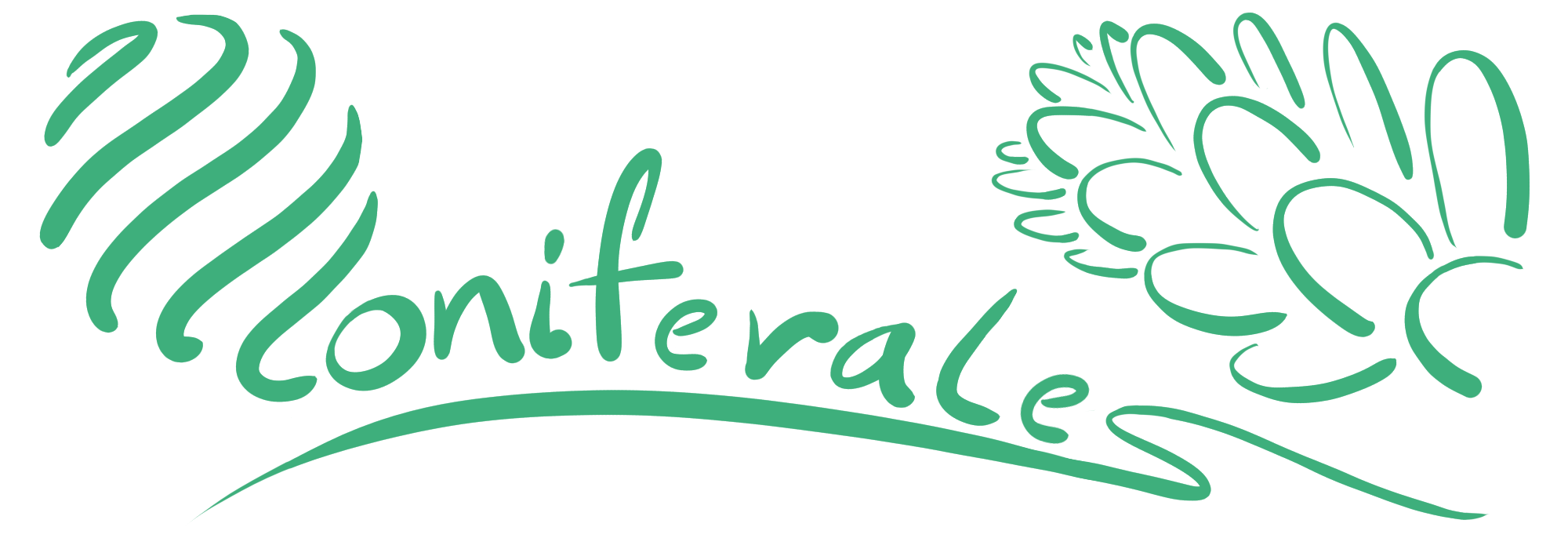Pinaceae Abies pindrow var. brevifolia Dallim. & A.B.Jacks.
Etymology
Abies refers to ‘to rise’; indicating large trees.
pindrow refers to ‘Pindrau’; the common name for this tree in the Himachal State of India.
brevifolia refers to ‘smaller foliage’; indicating its smaller needles compared to var. pindrow.
Colloquial Name
High Level Himalayan fir, Gamble fir.
Description
These trees can grow up to 60 meters tall, with trunks reaching 2.5 to 3 meters in diameter. The trunk is straight and column-like, supporting a crown that is narrowly conical or pyramidal. The crown is often somewhat open and irregular in shape. Young trees have smooth, light grey bark that gradually becomes greyish brown. In older trees, the bark becomes rough and scaly with deep, vertical fissures and turns dark grey-brown.
The main branches are relatively short and spread horizontally, with the smaller branches growing in a similar direction. The twigs are stout, firm, and light greyish-pink or light brown, turning grey with age. They have faint ridges and grooves and are completely smooth. The spots where leaves were previously attached are circular.
The buds that produce new growth are small, oval, or globe-shaped, measuring 6 to 8 mm long. They are often very sticky with resin, although most of the resin disappears after one growing season. The bud scales are broad, triangular, and purple-brown or dull brown, with edges that are irregular or finely cut. These scales stay on the tree for several years. The leaves grow more or less radially around the twigs rather than in distinct comb-like rows. They range from 2.5 to 3.8 cm long and are 1.3 to 2 mm wide, with a slight twist at the base. The leaves are narrow and flattened, with a groove along the upper surface. The upper side is glossy dark green, while the underside has two pale greenish-white bands. The tips of the leaves are usually rounded on vegetative shoots. While most stomata are located in two narrow bands on the underside of the leaves, there are sometimes a few on the upper surface as well.
The pollen cones grow on the sides of the branches, forming dense clusters on the underside of the shoots. They are yellowish-brown and measure 1 to 1.5 cm long. The seed cones also grow on the sides of the branches but stand upright on short stalks. They are cylindrical or oval-cylindrical, with a blunt tip. When young, the cones are violet-blue, maturing to purplish-brown, and turning dark reddish-brown when fully ripe. They are 10 to 14 cm long and 5 to 6 cm wide. After the seeds are released, the central cone core remains, forming a narrow, dark brown, cone-shaped structure.
The seed scales are fan-shaped and measure 2.5 to 3.5 cm long and 3 to 4 cm wide in the middle of the cone. Their surface is smooth, with faint ridges and fine hairs on the exposed parts. The upper edge is slightly curved inward and smooth. The base of the seed scale is attached to a small stalk. The bracts, which are small leaf-like structures behind the seed scales, are obovate or semicircular with small cusps. They measure about 1 cm long and remain hidden inside the cone.
The seeds are wedge-shaped and angular, measuring 10 to 12 mm long. They are shiny, dark brown, or nearly black. The seed wings, which help the seeds disperse in the wind, are wedge-shaped and measure 15 to 20 mm long. They are brown in color.
Subordinate Taxa
There exist 2 subordinate taxa for Abies pindrow:
Distribution
This map shows botanical records (points) for this taxon. By opening the map’s sidebar (collapsed by default) you can toggle visibility or change the basemap. By clicking on records, you reveal more information.
TDWG Codes
4, 40, WHM, WHM-HP, WHM-JK
Habitat
The natural habitats for Abies pindrow var. brevifolia are unknown. The natural elevation is unknown. There are no conifers associated with Abies pindrow var. brevifolia that are known of.
USDA Hardiness zone – 7
Abies pindrow var. brevifolia is hardy to USDA Zone 7 (Bannister & Neuner, 2001), meaning its frost tolerance lies somewhere in the range of -17.8C (0F) to -12.2C (10F).
Species Continuity
The population trend for Abies pindrow var. brevifolia is unknown. There are no known threats for Abies pindrow var. brevifolia.
IUCN Category – LC
According to the IUCN Red List, Abies pindrow var. brevifolia has been assigned the status of LC(Least Concern). This means that according to the Red List criteria, this species is not qualified as threatened.
Superordinate Taxa
The nearest superordinate taxon for Abies pindrow is Subsect. Holophyllae. The coordinate taxa for Abies pindrow are therefore:
Abies pindrow var. brevifolia is further placed under Abietoideae. Abies pindrow var. brevifolia is also placed under Pinaceae.
This map shows botanical records (points) for this taxon. By opening the map’s sidebar (collapsed by default) you can toggle visibility or change the basemap. By clicking on records, you reveal more information.



Reviews
There are no reviews yet.